如上文
http://tw.myblog.yahoo.com/stein-hsu/article?mid=1957&prev=1978&next=1933
演算過的
Fi (向內側需要抵銷的抗滑力) = 0.3(表象摩擦係數)* Sin-theta (tracking angle ~= offset angle ) * W(針壓).
像這支超過900 mm的長臂,tracking angle 約在 6度上下,Fi = 0.3*0.1*W = 0.03*W,只佔針壓的3%,抵不抵銷,無關大要。
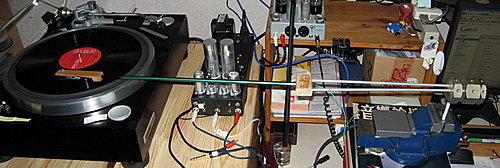
石磨子唱盤的 Fi = 0.3*0.35*W= 0.105*W, 約佔針壓的10%,不抵銷也許有大要。
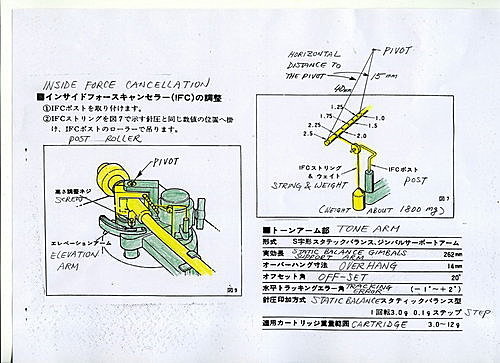
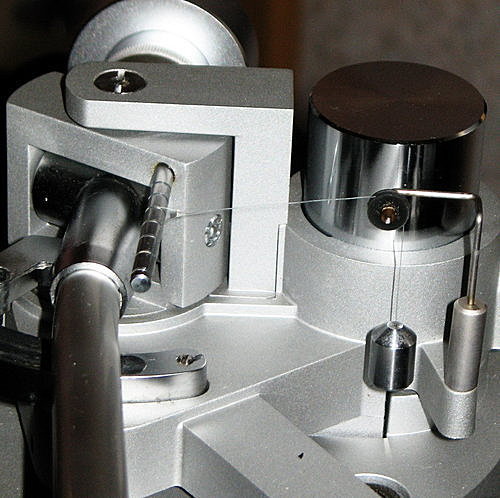
vinylengine國外網友有說需要調IFC時,是監聽左、右聲道的差別,調到一致為止。
道理是V形溝槽,內側是左聲道,外側是右聲道,溝槽受到的 bias 壓力左、右不同的話,聲音強度會有差別。
可是我反覆試聽,加不加上IFC( Inner Force Canceler)抗滑裝置,也聽不出有何差別。
只怕耳聽無憑,再用眼睛證實一番,掃描一個"心電圖"
利用成音軟體audacity,錄段鋼琴音符。
原來在電腦螢幕很清楚的,但是數位照相,又轉貼之後,圖譜就模糊不清了。
照片左上角可以看到是 44100HZ 32 bits 取樣.
上半頻譜是左聲道,下半頻譜右聲道因為相機角度關係,垂直的強度受到視覺上的壓縮。
右上角有 兩個放大鏡,按+可以加速掃瞄。這裡設定加速 到掃瞄全瑩幕約 50 milli-second, 千分之50秒,相當快速。
可以計數 5到 45 milli-second之間有45 個正弦波。因此 45/40 ms= 1125 Hz 是這個音符的基本頻率。
這是Ashkenazy 大師 敲下Chopin Sonata no. 3 第一個音符的心電圖。
底下3個完整的圖譜,只有一個是沒有加上 IFC, 另外兩個圖,是按照說明書加上Grado MM 唱頭 1.5 g 針壓需要的IFC。
如果 IFC 發生效果的話,照理期望其中一張圖,會跟其他兩張不一樣。
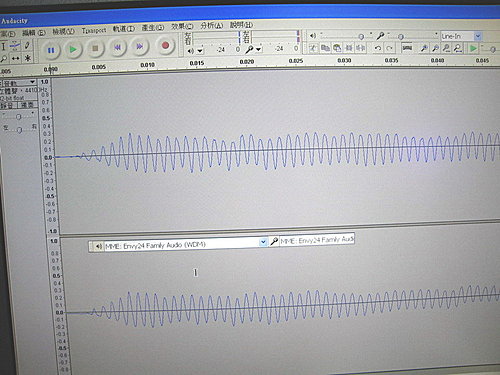
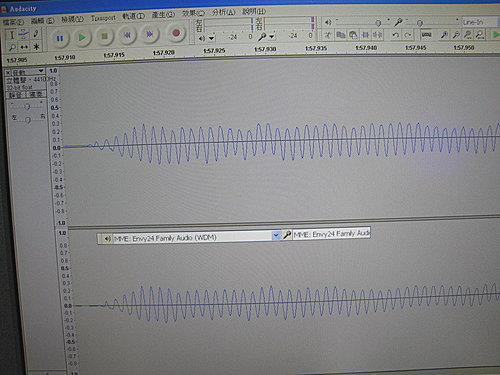
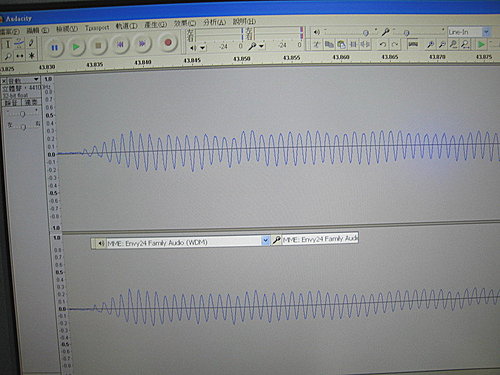
為容易辨識比較起見,我只裁取 左聲道 垂直上下0.3刻度之間的頻譜,如下示3個圖。
還是看不出明顯的差別在那裡。



我的結論是:
IFC抗滑裝置"加之無味,棄之可惜"
這位洋老哥的意見比較中肯:
http://www.vinylengine.com/phpBB2/viewtopic.php?t=27850
My 2p worth on antiskate:
1. AS mostly affects trackability. Skating force effectively reduces VTF because the groove wall is at 45 deg.
2. When AS is set optimally, benefit is recordings track better at extremes. AS setting does not improve traceability, so should not expect a sonic improvement from recordings that track well, or where VTF is sufficient to keep stylus in contact anyway. So the sonic effect is generally reduced tracking distortion on recordings which demand high trackability, same as providing adequate VTF. Sub-optimally, extreme tracking gives the sound of the stylus letting go, buzzy fuzzy distortion we all recognise.
3. Optimal AS more or less has the same trackability benefit as a slight increase in VTF.
4. AS is not a very large force. Other lateral forces can often be larger, such as that due to eccentricity. Or dynamic forces due to stylus acceleration in the groove through normal recording modulation.
5. There is a slight benefit to harmonic distortion from an optimal AS setting, probably from symetrical bias of suspension, but it is a relatively small effect.
6. AS setting is not that important if all else is set up and tracking well. It is OK to set AS crudely, and not worth being too precise. Many variables affect the optimal value between records, location across the disc, modulation etc. Typically 0.2gf perhaps for VTF of 1.6gf.
7. If all is well set up, should not hear a difference left-right when varying AS reasonably, it should not be that sensitive. If so, it will vary anyway between records, across the surface etc. Re-check azimuth and try again !
沒有留言:
張貼留言